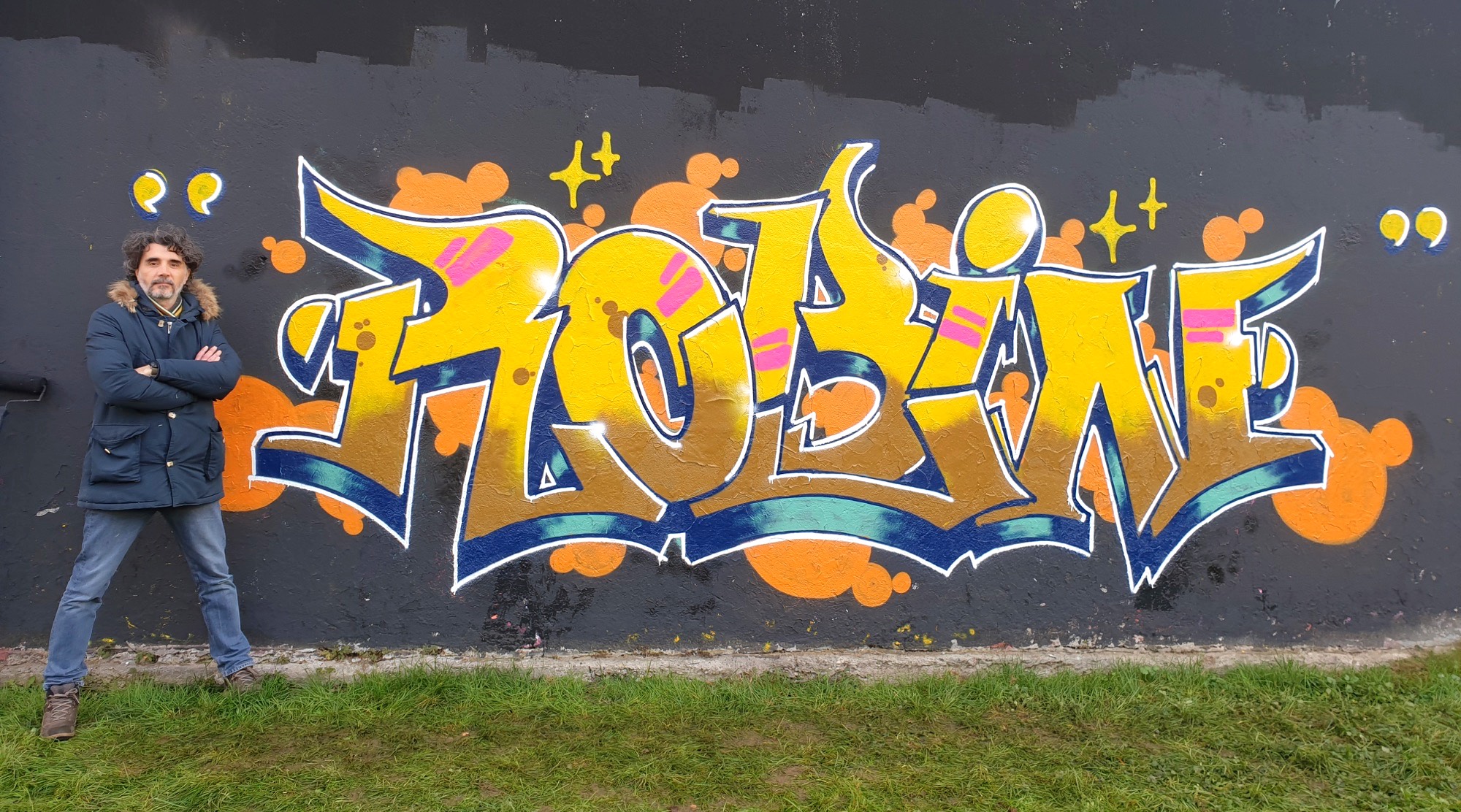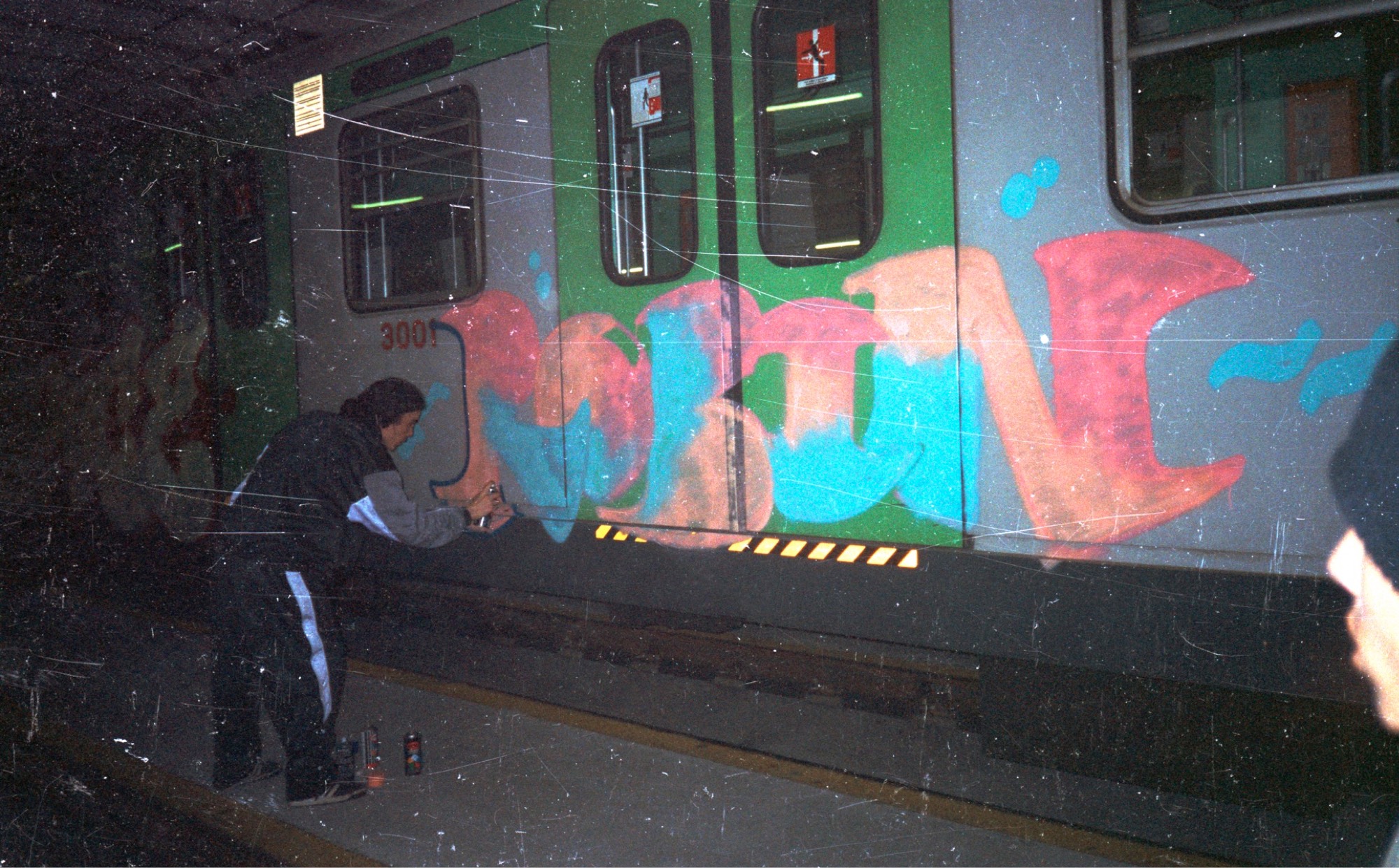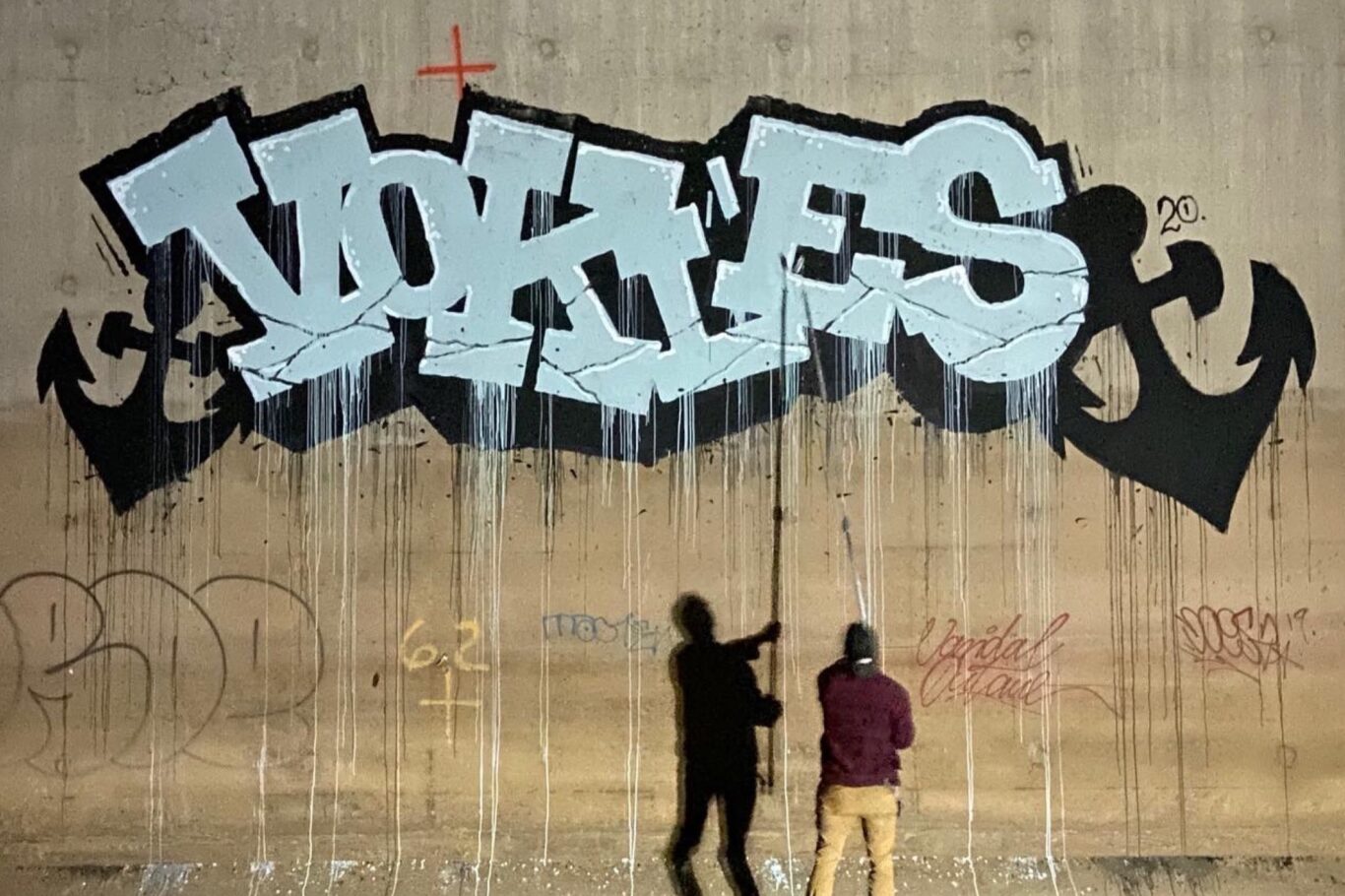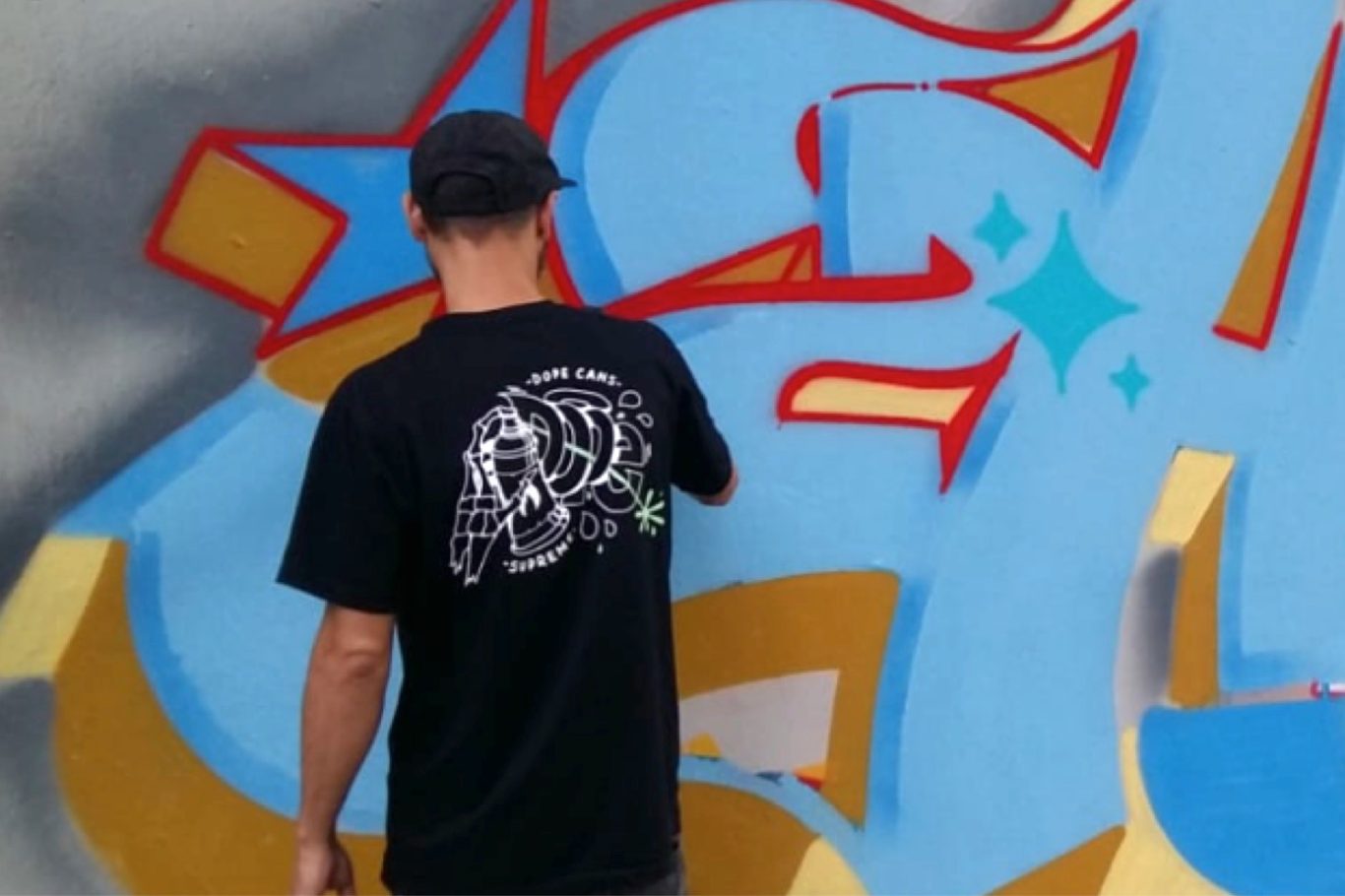Robin: «That day was like being in the movie The Warriors»
We had a very interesting chat with Robin, one of the legendary graffiti writer of the historic Milanese crew of Lordz Of Vetra, who told us about various adventures from his past, of the crews competing for the walls, tunnels and yards of Milan, Piazza Vetra, the beginning of the writing war and that reunion in the style of ‘’THE WARRIORS’’ movie.
Hi Robin, it’s a pleasure and an honor to ask a few questions to a legend and pioneer of Graffiti writing in Milan and Italy!When this culture was a niche one, avant-garde and above all in Italy still unknown to most, what prompted you to start picking up the spray cans?
ROBIN: The frustration! Towards September of ’93 the girl I had been with for three years left me and so, seeing that I was slobbering, I started painting. I’m not kidding… This strong inner tension was the spring. As Fritz da Cat said, we are a bunch of misfits! I would not be able to answer the stuff of niche culture. I didn’t think about it, I didn’t invent anything, I mean, at the time you could already see stuff around, bombing and bulwarks. It just appealed to me and I wanted to know more. You know, you see something that attracts you, you try it and you like it. You don’t even notice it and you’re in it.

Fortunately, I had a friend who had been drawing for years and I started scribbling with him. I’m talking about Rash, my buddy. And the graffiti writer with whom I’ve painted with more pleasure. In the yard we had gone hundreds of times together. We understand each other with a glance… Whole cars, nights in the car looking for deposits or evenings dancing together. Yes, because for a while we also did a bit of break dance but in the end it wasn’t our stuff.
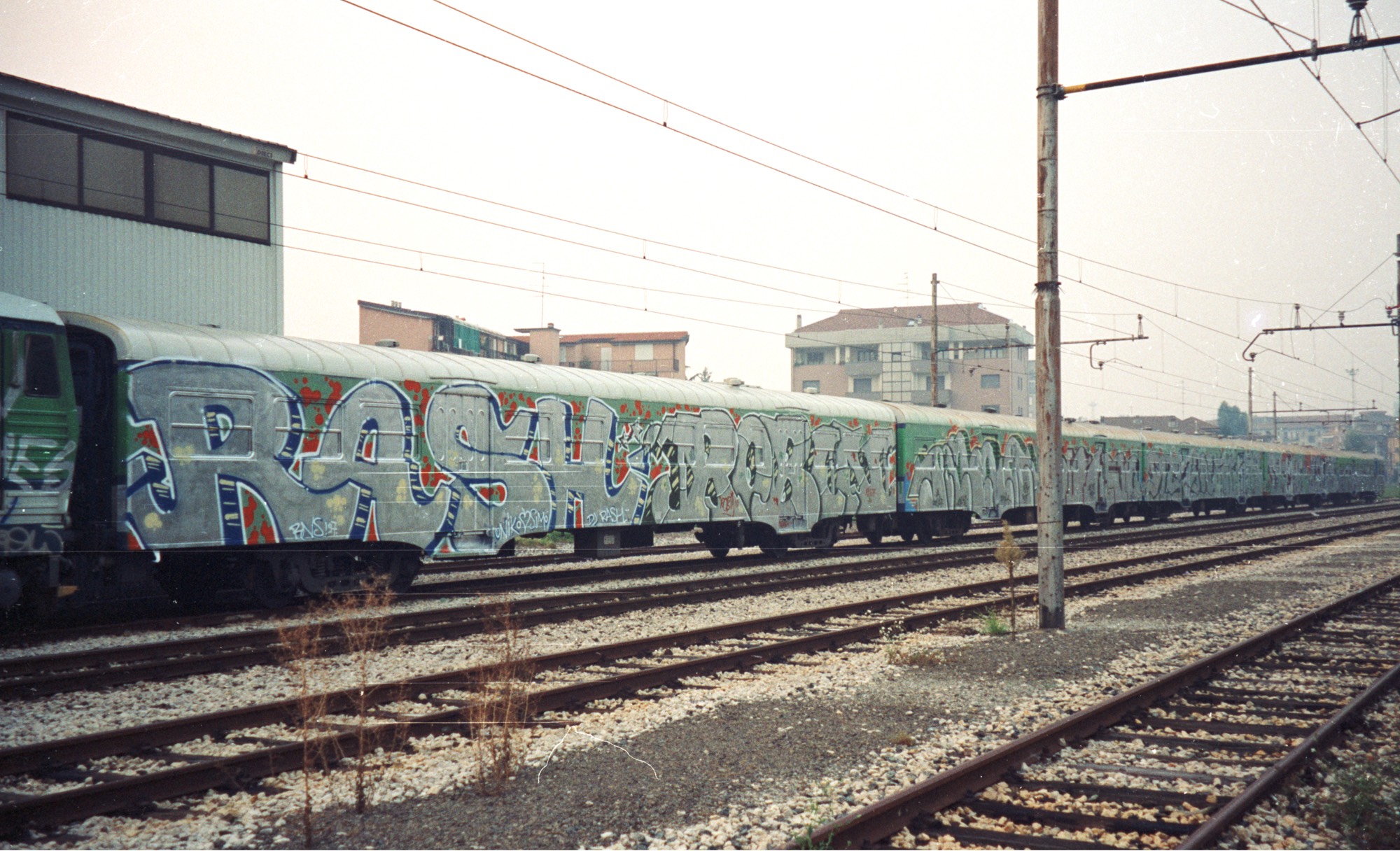
Lordz of Vetra Wholetrain (Ferrovie Nord – Novara, 1997)
What’s the story behind the “Robin” tag?
ROBIN: At the time, I was looking for a name that was impactful, easy to remember and I remember seeing a Polaroid pic of me as a kid dressed for Carnival as Robin Hood. That photo is a special memory because it was linked to a very special grandfather who I lost shortly after. Then, I liked the idea of an admired, secret , a wanted character that always gets away from situations.
Tell us how the legendary ‘’Lordz Of Vetra’’ crew was born and how you became part of it. In your opinion, what are the most iconic episodes, moments or anecdotes that have marked the history of this crew?
ROBIN: The history of Lordz of Vetra, name coined by Rein if I’m not mistaken, started around the middle of ’96 thanks to the merge of two crews, the GR and the RNS, plus other mavericks like Shampo, Uncle Cake and, not to forget, Hekto and Panda. (if you then ask Mind he remembers all the dates and precise details.)
The GRs had been in Piazza Vetra for a long time and when we met (I was there with Rash, Dumbo and Onemen, all of the RNS) a beautiful friendship was born right away. In general, the attitude of the Lordz has always been very open. In fact, the years after many others have joined the crew. They came to the square, gradually integrated into the company, became friends and naturally joined it. I think of the various Risk, Dance or even Fritz Da Cat for example. Friendship always came first. In fact, if you came to the plaza and showed up and you weren’t a dick, no one treated you badly. We liked to make a mess but in good time…no quarrels, lots of beer and joints and then off to paint.
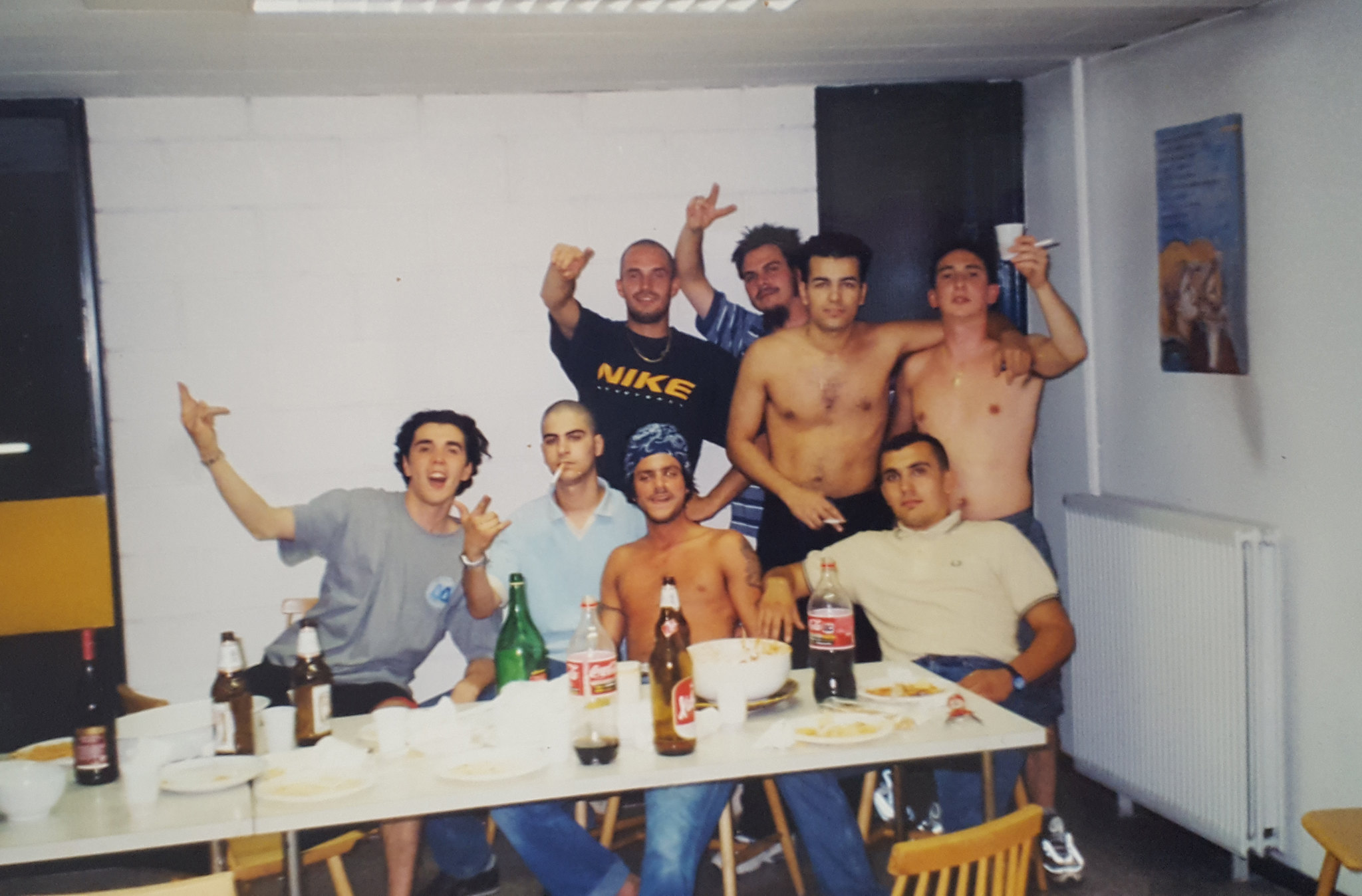
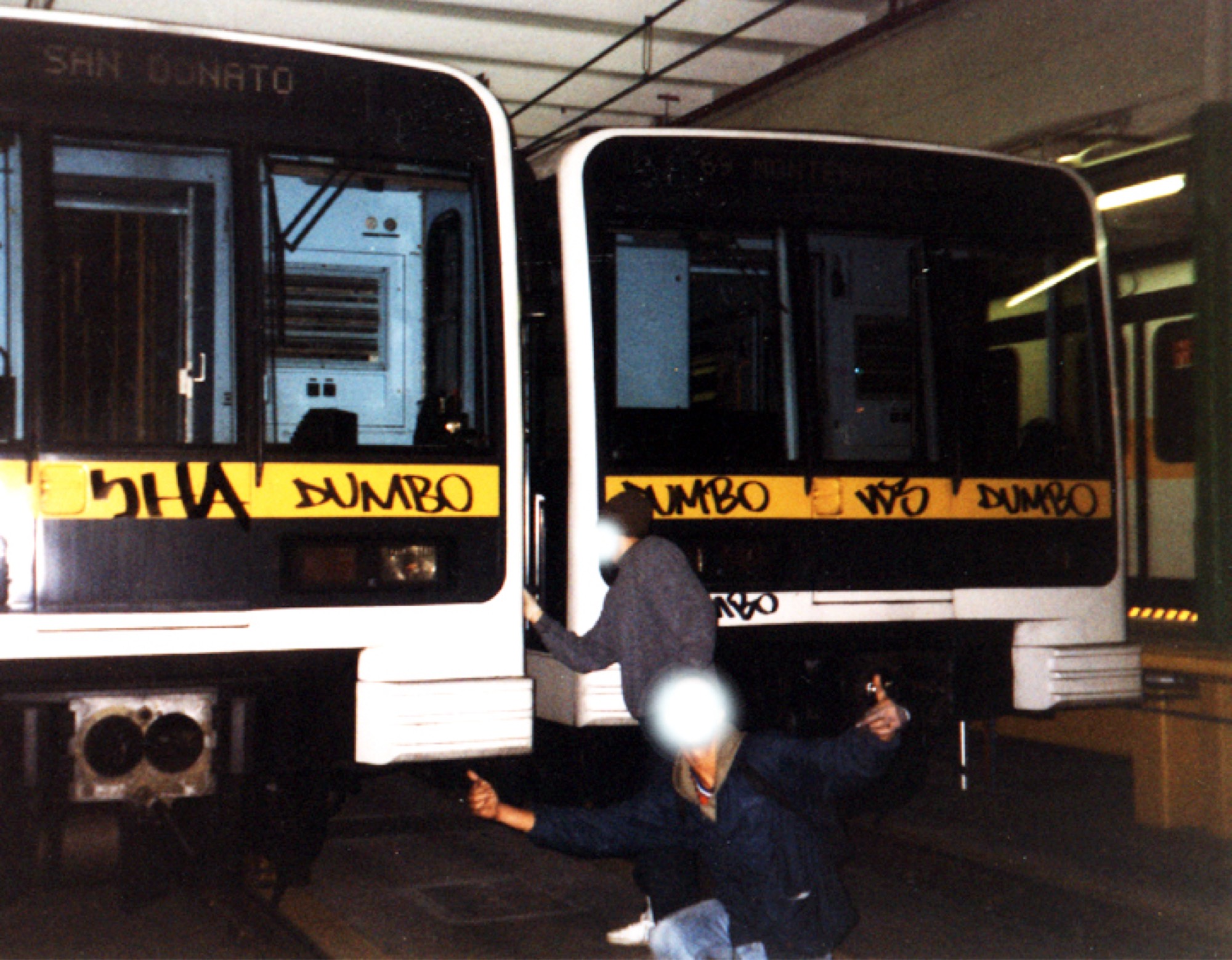
Then, on closer inspection, the first contact between the two crews took place on May 1st of ’95 when, on a surreal day, we went from unknowingly finding ourselves drawing together in an abandoned factory with another crew, the SAD, and being chased away by a security guard who also fired several shots in the air, up to draw the metro all together. Very rare thing at the time (I think the idea came to Nitro but ask Mind! Haha).
So at any moment we were all outside the San Donato depot ready to paint. That was a unique day full of fantastic emotions, from the neon lights of the depot, the unique smell of the subway trains, the steady whistle and the adrenaline rush!
However, there would be too much to tell because we were always in action and every day there was one! From the most absurd escapes, to the unique parties in the square and the evening battles for those who took seats in the car to go paint. We have lived through very intense years, it is difficult to choose between the episodes.
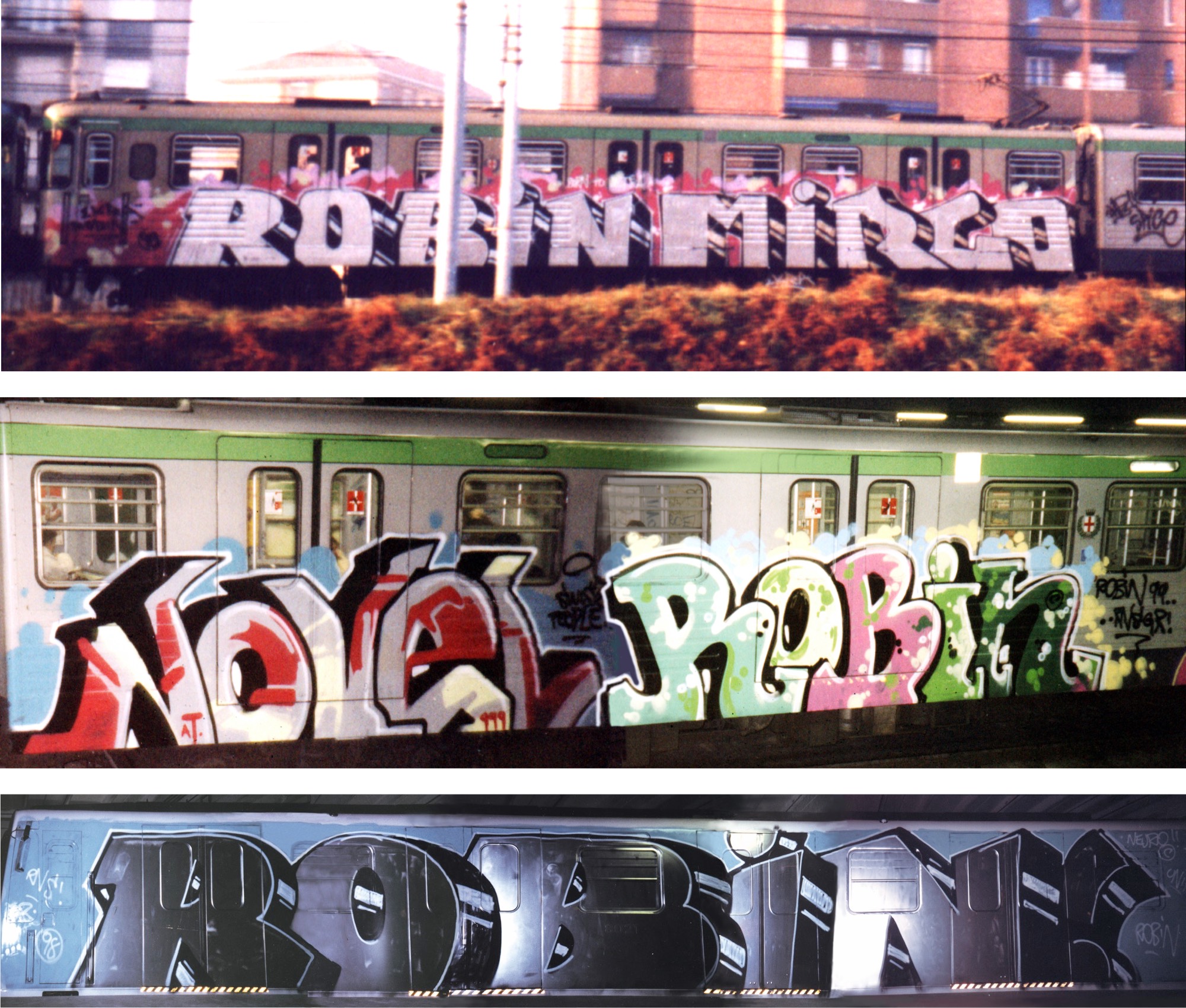
For those who don’t know Milan or are too young to remember, the Park of Piazza Vetra, in the Navigli area of Milan, at the time it was infamous, was a real “jungle” of drug dealers and people of all kinds … Why did the crew decide to “make a square” in that park, bringing together historical Milanese graff writers from different areas, from Dumbo to Bean? In a Milan that doesn’t exist anymore, what made Vetra a landmark and iconic place?
ROBIN:For a few years in Milan there have been two well-known dealing parks: Sempione and Vetra Park. Sempione was a large park which then, unlike Vetra, was fenced, closed and guarded at night. On the other hand, Vetra Park was smaller and in the Navigli area (the area of the clubs), always open and illuminated. In itself, this park was not that great, it was kept quite poorly, the lawns were ruined and the area was not well cared for but was one of the richest area in terms of clubs; so if you wanted to drink a beer or make yourself a joint in peace , at the time you were used to go there spending a peaceful evening with friends. So, also due to its central position, the park was always crowded.
In ’96, the Rns began to frequent Piazza Vetra which was the meeting point of the TAK-GR and with whom we created a great friendship.
The GRs were made up of guys from different areas of Milan so the square was a good middle ground for everyone. First, shore in Cadorna (Railway Station nrd) and then we found ourselves there. It included Spice, Duplo, Rein, Mind, Bean, Cleph and other nice and cheerful people like Fede, Patricia and Kauto.

Then, In Vetra you could find everything, it was frequented by the most disparate people, from drunk tramps to San Carlini, from drug dealers, often from North Africa to alternative social centers, from discos with their stereo always on the ball with tekno music to gentlemen for good who went on to buy a few grams of smoke or coke to use with their wife and friends. Then, among street vendors, heavy smokers and all sorts of characters, there was us.
However, apart from rare cases, the park was actually a quiet place. In 4 years, I’ve never seen fights or anything like that. There was room for everyone and everyone respected each other. In addition, a live Real TV-style show was offered to the whole park for free a couple of times a week.
The police raids. It was fun, a sight. The police came in with cars, like movies, and you saw a general escape. No less than 20 people began to run in all directions. In the midst of the chaos of the people the cops chased the unfortunates who most of the time got away with it, in fact the accesses to the park were different and it was difficult to block them all. And in the end, of course, the applause escaped… for the fugitives, of course!
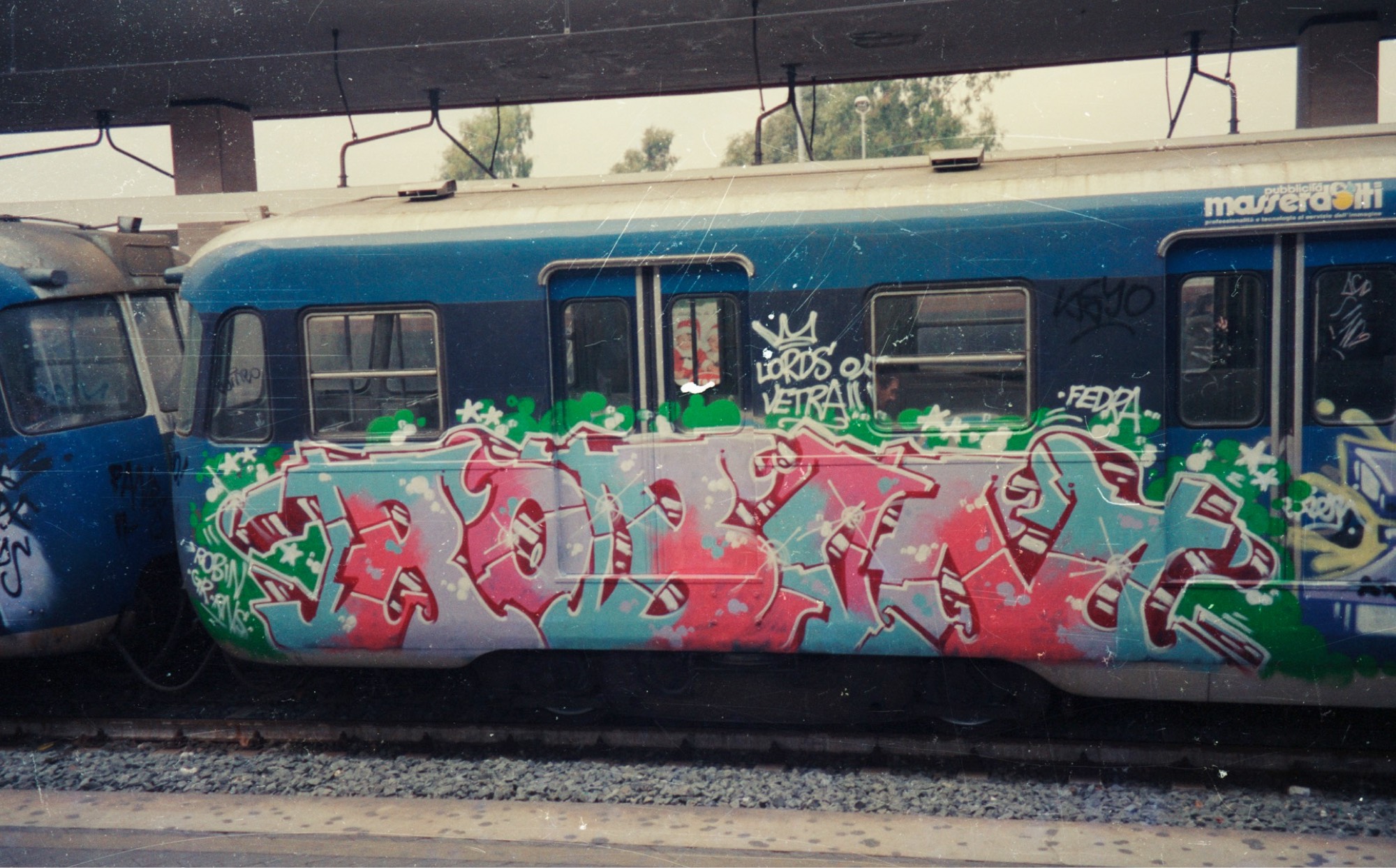
At a certain moment, the authorities and institutions decided to give a squeeze in the name of safety and “decorum” of Milan: in addition to fencing Vetra and other public parks, at that time, they also declared war on graffiti. What can you tell us about that period? So, a historic meeting between all the crews was organized by Atomo to try to figure out what to do, right?
ROBIN:In reality the fact of politicians waving the flag against graffiti has been repeated over the years! However, if I remember well, the famous meeting called by Atomo was around the beginning of ’95. It was In the middle of the electoral period and around Milan was blowing bad air. For weeks, the newspapers talked about nothing but graffiti and graffiti artists. Albertini, who later became mayor, had launched the idea of putting a reward on the graffiti writers and Atomo, managed to organize a meeting in a small social center in the Ticinese area to which all the crews were invited to talk about the situation.
For me it was fascinating to see the various groups of Milan arrive, as many of us had never even met before! I felt like I was in a movie. I imagined “The Warriors”. However, I remember, some of them didn’t show up fearing that it was a trap. For me, it was the first time that I saw so many writers from Milan gathered to talk, just like a community and I was very curious to see what could come out of this meeting. Atomo, is one of the first graffiti writers to paint the walls in Milan, a member of the social centers and wanted to be our spokesperson. So he proposed, to calm down the situation, making a public notice expressing that all the community of graffiti writers committed not to write on monuments and to write less in the city. It was something not very plausible and in fact there was a heated debate between Flycat and Atom and, as expected, nothing came of it. In fact, this could not work for various reasons.
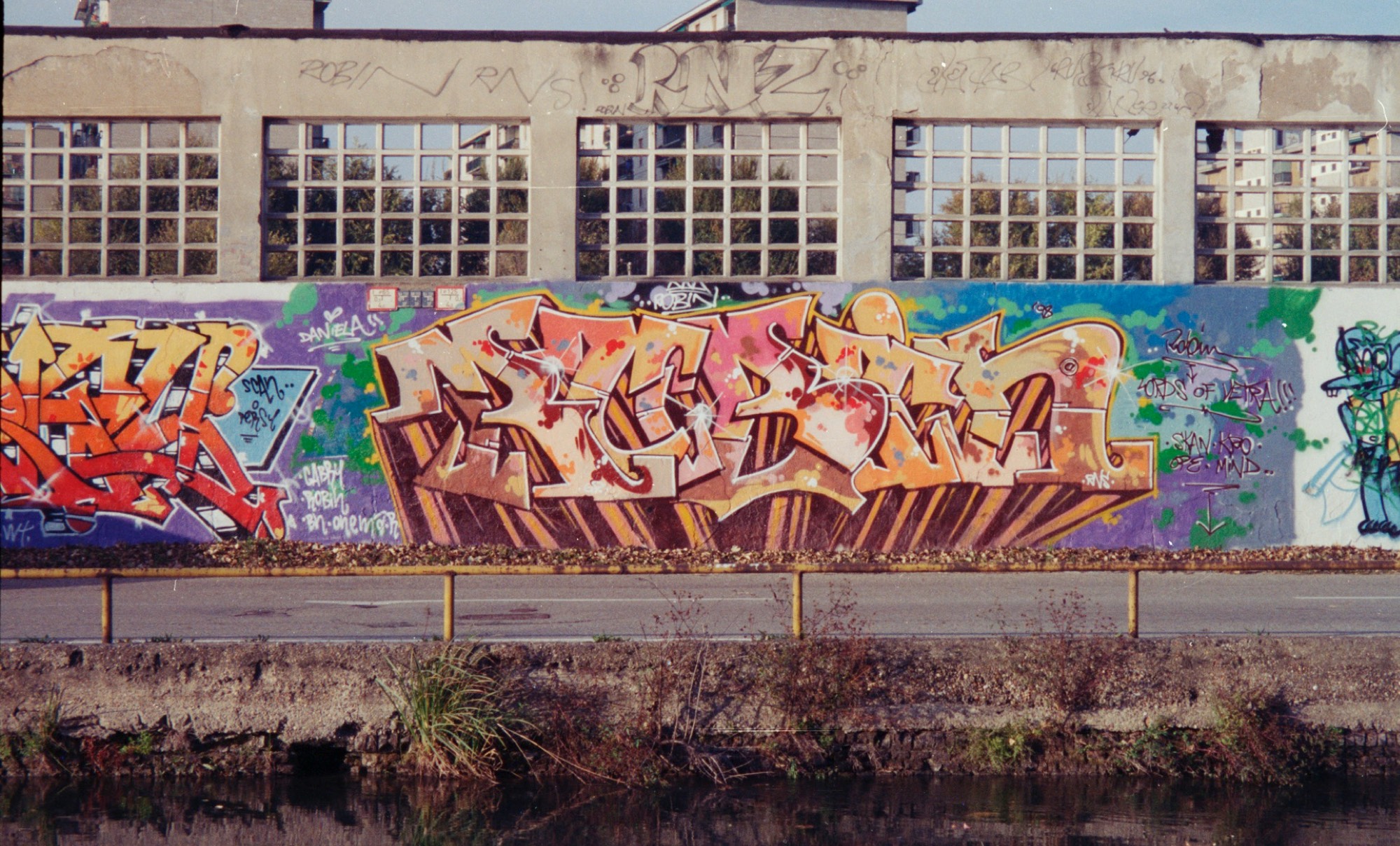
Robin (Milano, Alzaia 1998)
First, Atomo was not really one of us, as he was not a graffiti writer and he wasn’t respected by everyone. Second, because we were no longer a community and we were hundreds and it was impossible for everyone to agree. The reality was very varied and complex. Between us, due to the competition, we did not get along very well, and quarrels and envy were the order of the day!
Everyone wanted to be the best and “rock” with their style and they had different ideas on how to achieve this. There were those who painted only the trains, those who painted only the legal walls, those who filled the city with tags, or signatures, those who were angry with those who ravaged the city of signatures, those who sought only adrenaline… These differences of views created many tensions which, however, were also the hallmark of the Milanese scene. In fact, these clashes were extremely productive both for the development of one’s style and for the evolution of the movement, as well as for the growth of our personality “.
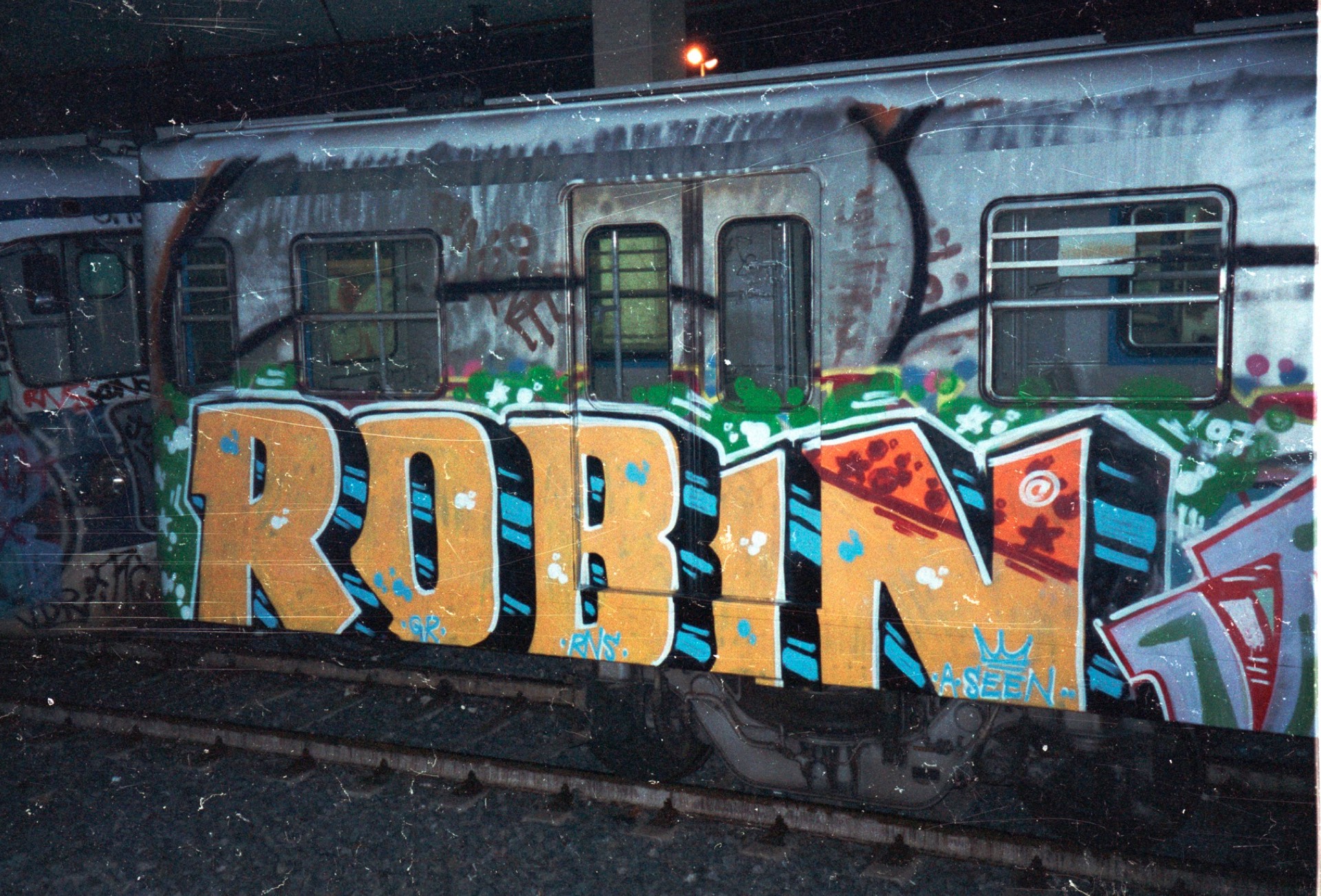
To a certain one an important discovery was made in Milan and to paint the trains of the State Railways, the competition passed on the regional trains of the Northern Railways, which circulated much longer: what did this change entail? Who was the first to have this insight?
ROBIN: The Milan scene of the mid-90s has changed, moving from walls to trains and as Spice explains well in the Nero Inferno documentary, the action has become as or even more important than the quality of the piece.So whoever was more unscrupulous took center stage. Dumbo, for example, was arguably the biggest striker on the scene and many consider him the King for that.
As a crew, the Ckc rocked a lot and for years… they actually started the history of FN (Ferrovie Nord). As a crew I’ve always seen them as the only ones I felt honored to be competing with. Us, the Lordz were all bombers and so as a crew we were really everywhere. On all Fn and Fs lines, Metro, bombings and megablocks in the city, but also on the walls in the various halls of fame. Just to say, before us , the whole trains had never been seen before in Milan.
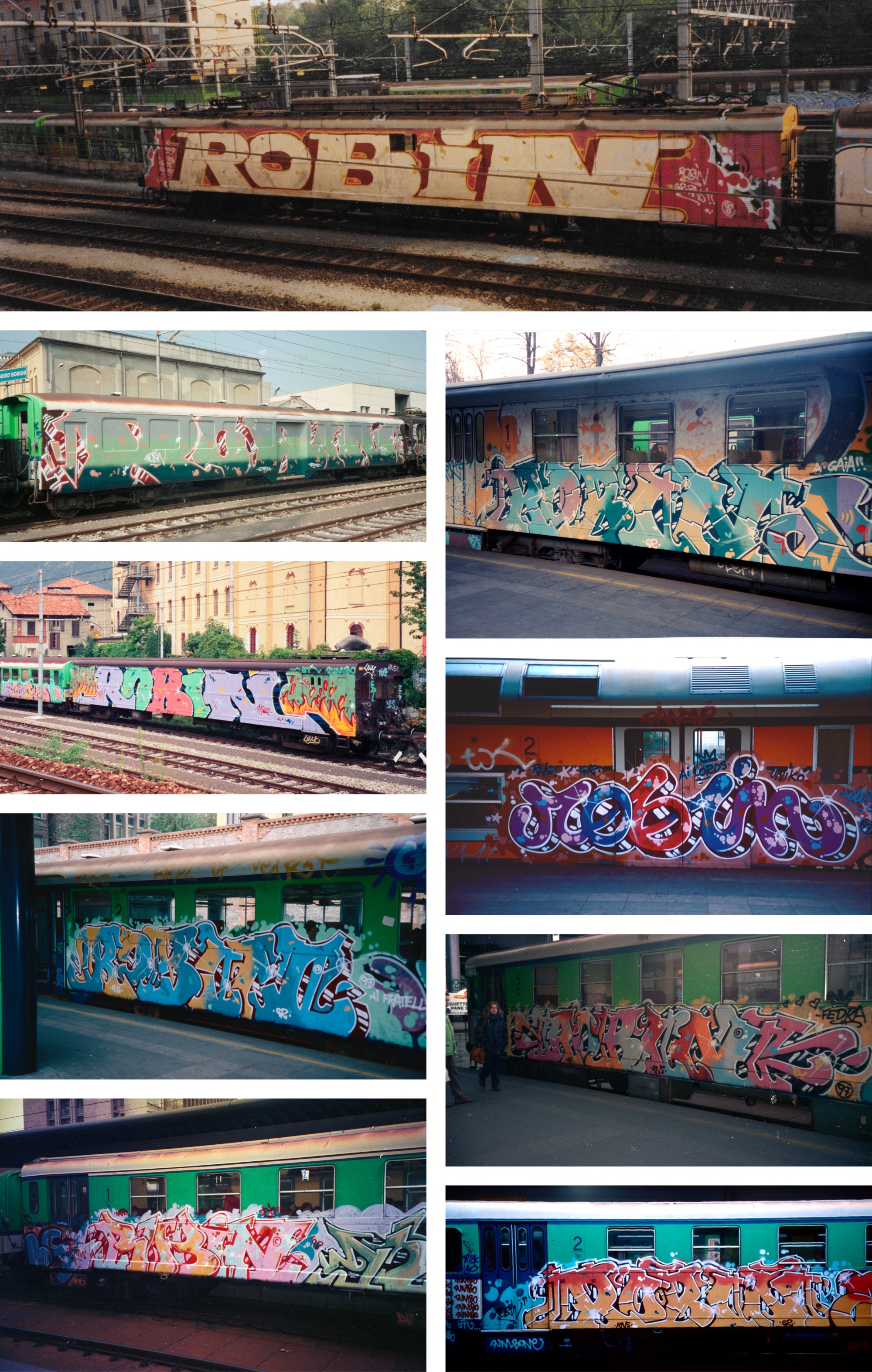
Therefore, we were the first to run the painted metro in collaboration with VMD, OAS and CRZ. It was a complicated thing because the ATM security was very careful not to run anything. It was a challenge. I remember Neuro was obsessed with the idea! Haha. At first we entered the yard 3 or 4 times a week in 7,8 or sometimes even in 15. We drew a different train each to force them to bring out at least a few painted wagons. Imagine when the escapes started, 15 people running everywhere! We had a lot of fun! We were skinny and hungry! Ahah
In retrospect we were crazy but it was part of the writer’s job who makes bombing climb over walls, hide in the most absurd places, paint in the dark or in the middle of winter with your hands freezing around spray can or breathe in the spray paint dust. This was the price to pay, as well as the risk of complaints, but if it allowed us to achieve our dreams it was worth it.
As told by your other former colleagues, in the 90s, the entry points and how to move in the subway tunnels were information jealously guarded by graffiti writers and crews as an inviolable secret. Can you tell us your point of view about these fascinating dynamics of that time?Who kept these secrets in your crew, and how did you usually organize your missions in the undergrounds of Milan?
ROBIN:Well, secret stuff didn’t work between us as we’ve always shared everything.The RNS, for example, had more experience on the FN (Ferrovie Nord) and the GR had nice yards in the FS (Ferrovie dello Stato) and shared the tips. When I started, there was the behavior to keep secrets and nobody told you anything. For example, there were those who had the keys to the metro and jealously guarded them, but they were never in the spirit of our crew. Of course there was competition and each crew found their own tips but the secrets did not last long and things went round and round and afterwards they got discovered.
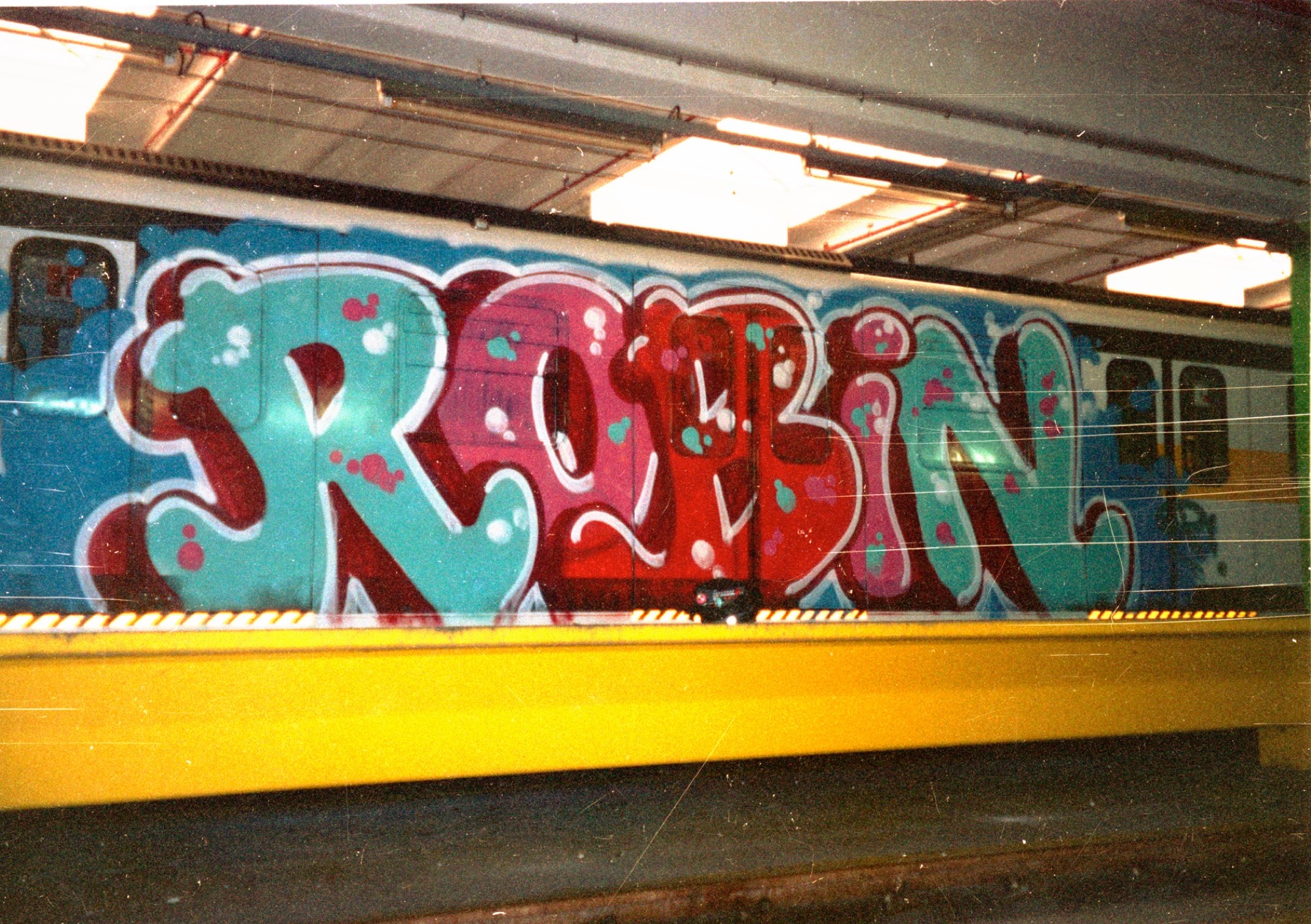
Then, in my opinion that was not an attitude that paid. For example, if anyone open minded would come to us for sure we could end up drawing together in the places we knew best. I remember that thanks to the OAS crew I painted a colored wholecar in line 2 in the tunnel but the next time I saw them, I was the one that took them to paint.
During the early 90’s and in the beginning of your career, who were the most active crews? What were the most heated rivalries between crews that the Lordz Of Vetra have had and in general that have marked the history of graffiti in Milan?
Here we need to make a clarification because it’s difficult to establish how active the crews who drew in the city were. For example, many painted mainly in the Hall of fame. So the names I could give are mainly for crews that did trains and bombing extensively throughout the city and it also depends a lot on the periods. For sure there are CKC, who in my humble opinion have been the No. 1 crew in town for years. This is how I see it, but I am aware that mine is a very personal point of view and I do not want to offend anyone.
I could make you a list of crews but if I name 5 I piss off another 5 that I have not mentioned! Everyone has their own story and everyone on the scene who was active has my respect even if they weren’t my friends.
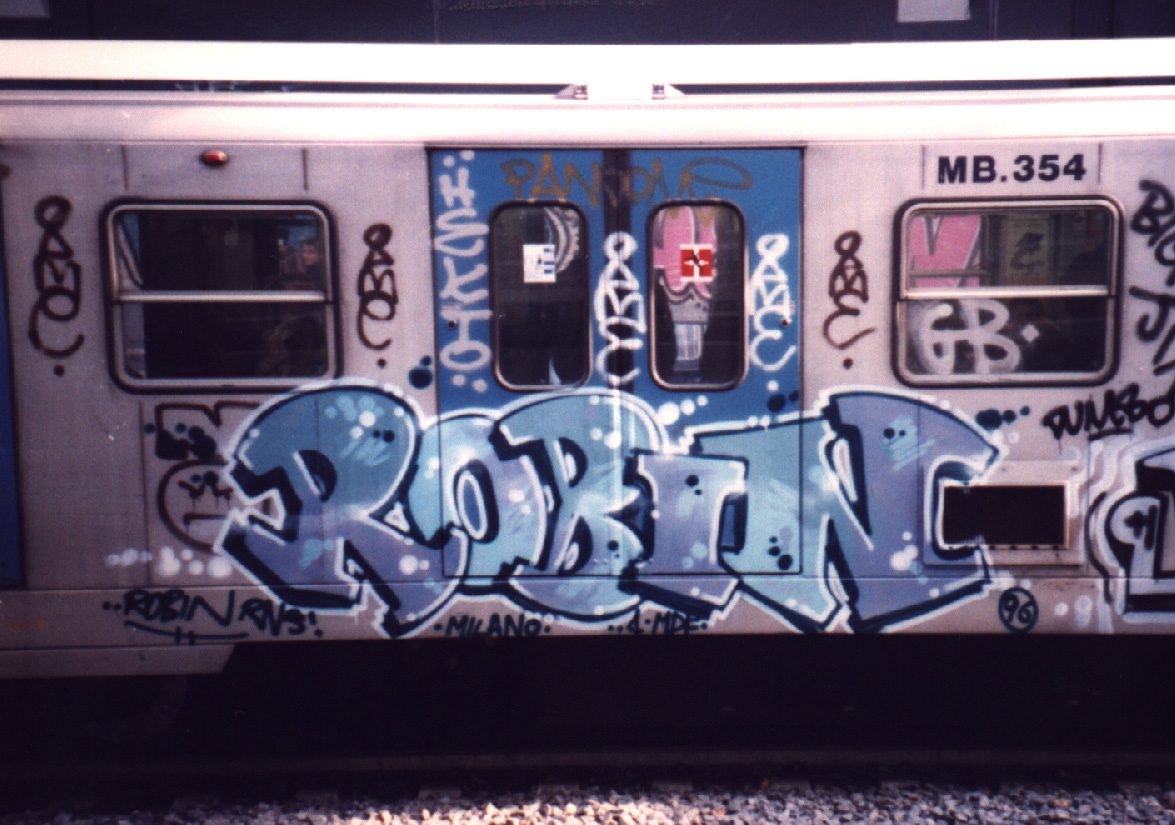
Painting in the most coveted, visible and dangerous places, where no one had yet managed to paint without getting caught, has always been one of the most prestigious competitions for writers. For you, who were the most fearless writers from this point of view? What were the most sensational actions of the time? What about the most amazing actions you took part in?
ROBIN: “Well, a film would not be enough for the list of crazy feats! Once, Orma told me about a sensational escape in a tunnel where he managed to get away with raising a heavy trap door only with despair and then found himself in the moat of the Sforzesco Castle (Monument located in the center of Milan ed). In those years if you went around at night in Viale Monza you could see Rae go down into the tunnel by raising the grates and in the meantime if you looked up you would find Noce making a tightrope roof.
There is one of my escapes from those years that I remember more than the others: it is the one in line 1, with Rein and Nitro in ’96. In those years in line 1 at the Inganni station there were trains left in the tunnel. The technique was simple. You went into the station, you went to the end of the platform, right under the camera. You were there for 10-15 minutes. If the guardian didn’t come to check for himself, you went into the tunnel. Hardly three went unnoticed but as often happened we tried anyway. We waited for a while and no one came to check, so even though I wasn’t very convinced, we went into the tunnel.
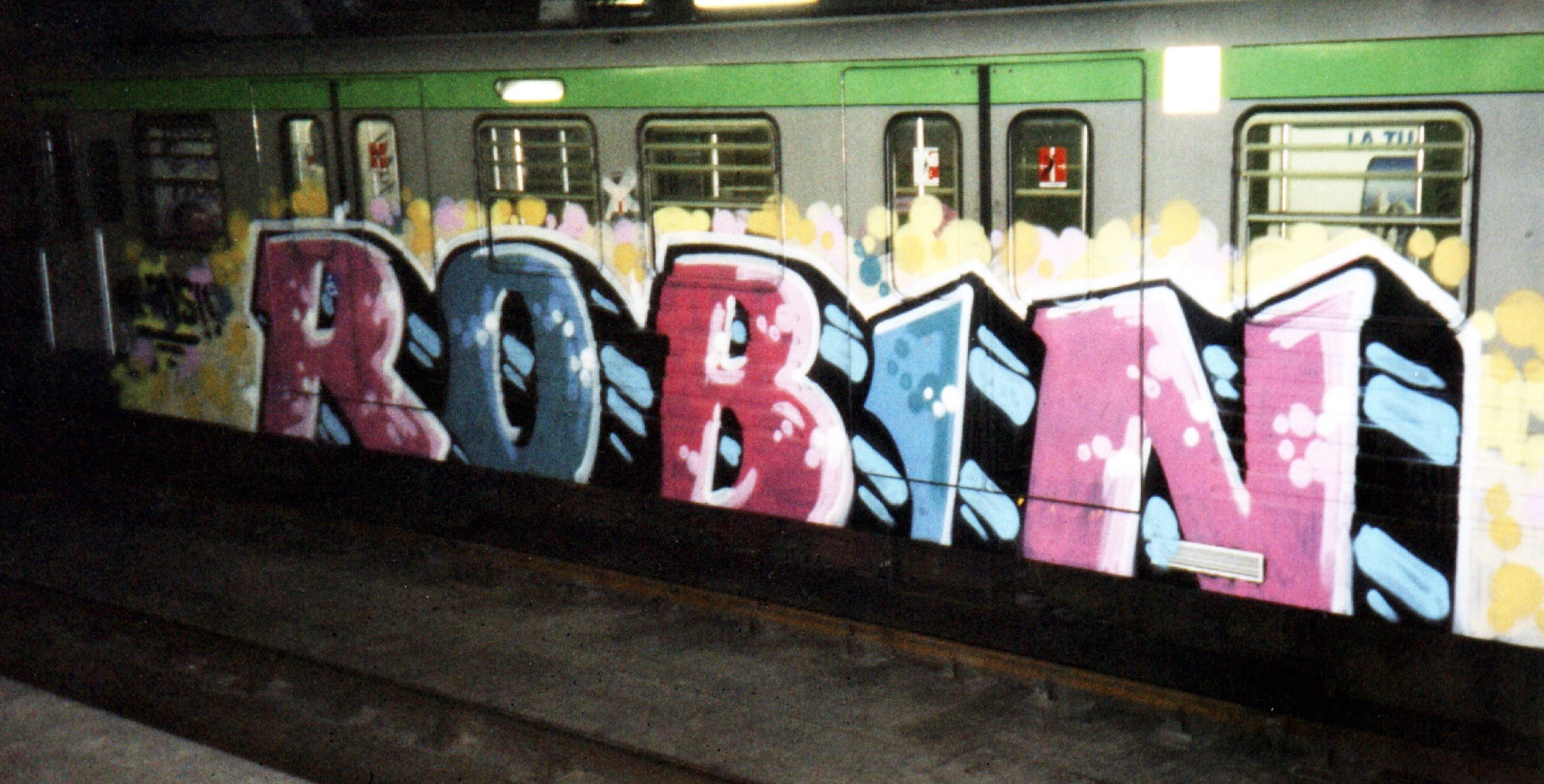
Once in the tunnel, since the train was in the middle between two tracks, the technique for painting was this: every time the train was about to arrive, you hid in the train. Normally these departures took place in the evening because the trains passed about every 10 minutes. Arriving at the train, avoiding touching the tracks with the current, we began to paint and hide. However, after about ten minutes, Rein notices that there were two people on the dock, looking towards us. From a distance you can’t see well but they look like two ATM (Transport service of Milan) security guys.
It was a moment of panic. “What’s now?” “Let’s go out on the other side!” We turned to the other station but the train was already ready to leave.
“The train is coming”, they said. Rein said: “Let’s go on the guards and break it !!” Heavy, I thought. But the inevitable “Ok”. Nitro seemed to agree and while they went on I took pictures of the pieces.
It was about a few moments when I started running through the tunnel and the train in the other station was already on its way. I jumped onto the safety dock and ran with all the energy I had. I hear the train coming behind me. I turn to look and see the driver waving his arms. I don’t know how I did it but the fact is that I got out of the tunnel just before him!
I only remember that, passing by the security guys (where the monitors are) that calls to raise the alarm. Then as soon as we left the area we took an ATM bus that passed nearby… This is the beauty of the city! The funny thing about Nitro was that he saw the scene like in a movie. My image, with the train running behind and its lights reaching me.
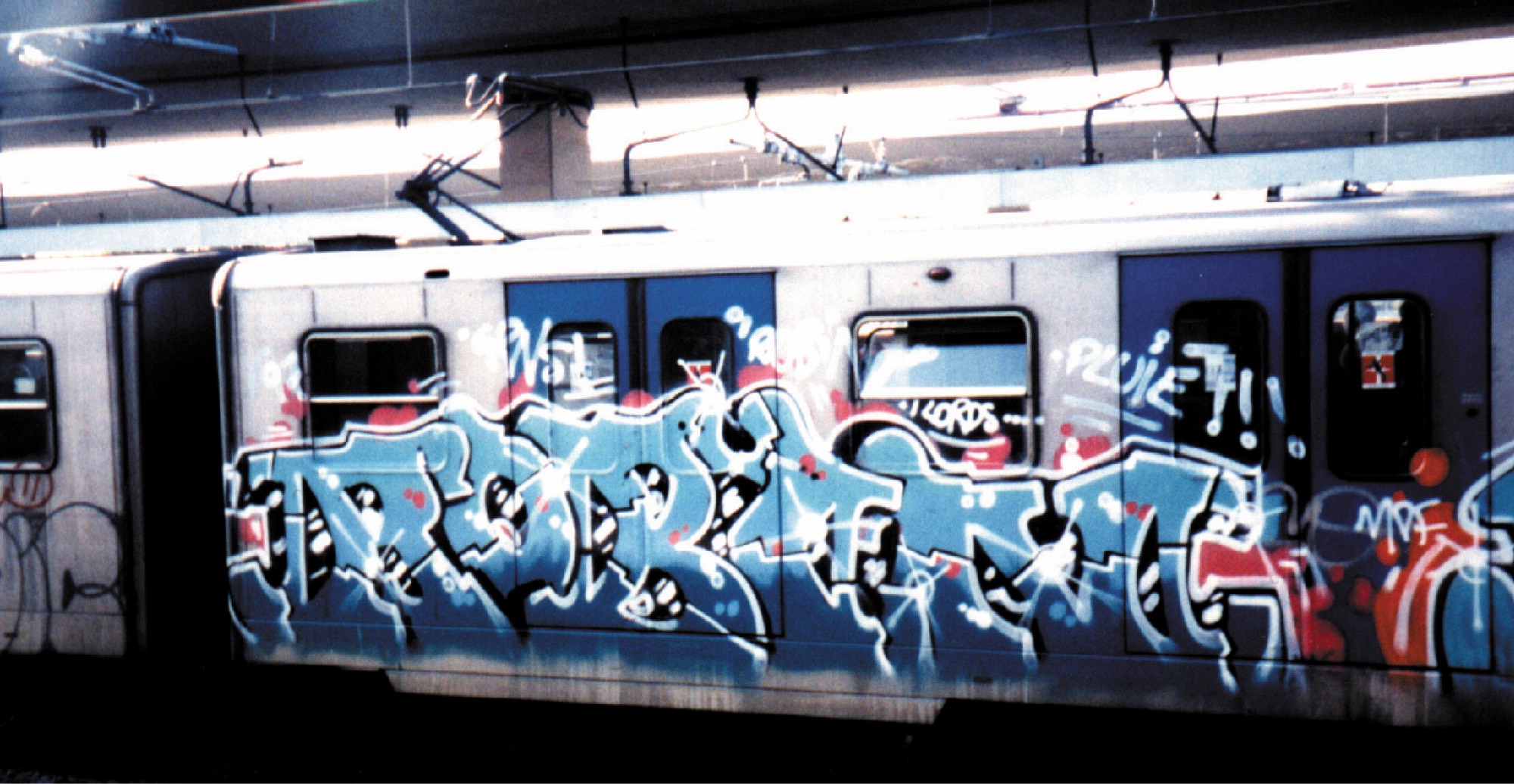
Which international and Italian graffiti writers have influenced you the most? In your opinion, who were the most important figures on the Milanese scene who revolutionized the movement in our country?
ROBIN: Personally, I’ve always had in mind Subway art. Dondi and Seen mainly. Then, in Milan there were a lot of talented writers but it’s a matter of taste. Tawa, DropC, Rae when I saw their stuff I was always in awe, but at different times Cake, Chob, Mind, Spice and Dumbo also rocked hard. Then, asking me who influenced the scene… f**** you put me in another minefield! Let’s say the Lordz of Vetra contributed to it.
In ’99 you created what became not only an exceptional testimony but also a sort of “Bible” of graffiti culture in Italy and beyond, handed down by generations: “Nero Inferno”. Tell us how it was born and if you were aware of what you were creating.
ROBIN:Yes, I was aware that I had done something unique because there was nothing like that around at the time but I couldn’t imagine how much it would affect the generations to come. The video was meant to be just the first of many. There were other writers and stories that deserved to be told. It was an eventful period and even if we didn’t realize it, it had reached its peak, at least in Milan.
However, the video was a collaboration with Phast, who had already done several shots and Andrea “falco” Rasoli who helped me with interviews and other material from the FN and Metro. Then, I did the editing secretly during the Christmas holidays in the studio where I used to work! Unfortunately, the reactions to the times were a bit cold due to a moment of change in my life so I stopped there. On closer inspection, a sequel on the history of the metro in the 2000s would have been deserved, but I left room for others. It was their turn to do something new, I had done mine for the culture!
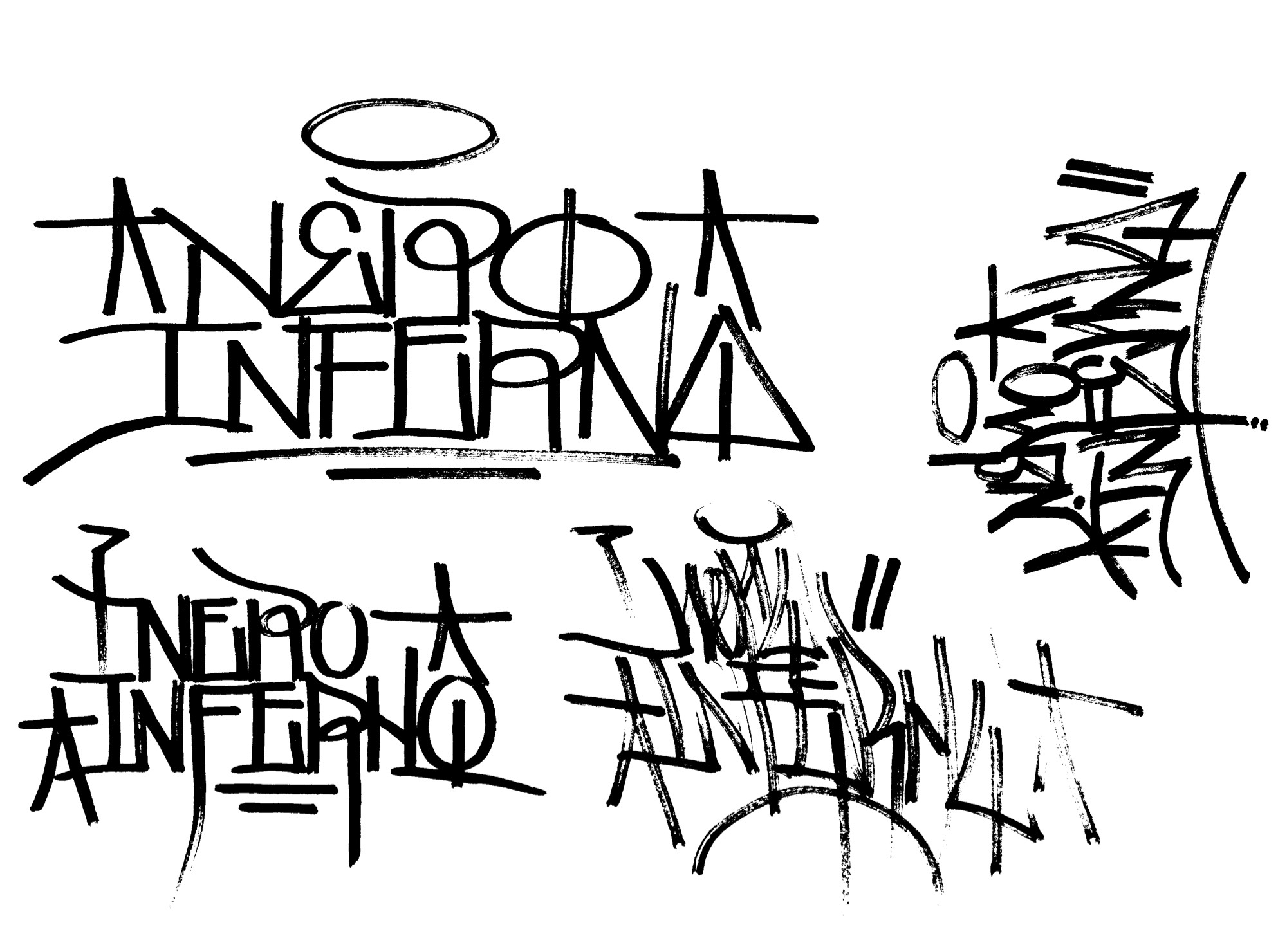
Who is Robin, Lordz Of Vetra and what does he do today?
ROBIN: Today I work in the field of special effects and after years of hard work I am at the top of my profession. It is a creative but also technical and very complex job and every day is a new challenge to create beautiful, new and captivating images. Here we need another interview but not in a graffiti magazine!
